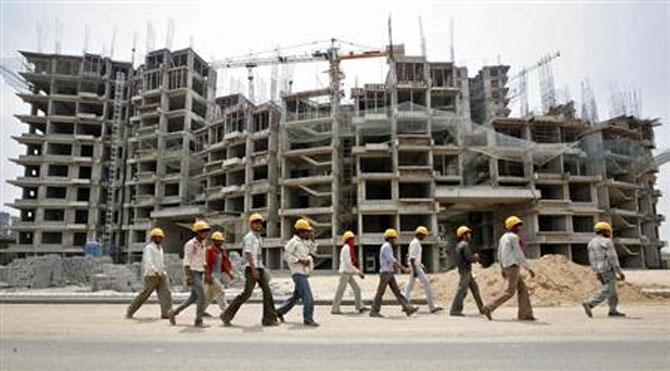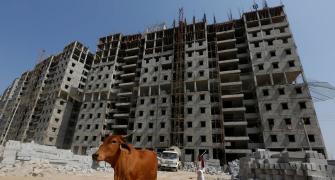Real estate players with high recall brands account for 56 per cent share of the total housing supply in 2018, showing a year-on-year (YoY) rise since 2015, when their share stood at 41 per cent of the supply.
Vinay Umarji reports.

Not just metros, but even in tier 2 and tier 3 cities, a realty developer's brand name is increasingly wielding clout among buyers.
More residential buyers are making a shift from unorganised stand-alone players to branded ones.
Real estate players with high recall brands have since upped their game and account for 56 per cent share of the total housing supply in 2018, showing a year-on-year (YoY) rise since 2015, when their share stood at 41 per cent of the supply.
This was revealed by data from Anarock Property Consultants, a real estate consulting firm.
According to Prashant Thakur, director & head (research) Anarock Property Consultants, 'branded' developers need not be only listed players.
Real estate developers that have been operating for a decade and more, newly-formed entities of large conglomerates, and those with sizeable areas under development either locally or pan-Indian, are now recognised as branded developers.
'Most of these companies' new supply is no longer limited to the premium and luxury segments.
"They have spread themselves across the high demand affordable and mid segments, comfortably priced within a budget not exceeding Rs 80 lakh.
"In retail, we now see several high-value designer clothing brands launching relatively more affordable apparel lines for 'non-elite' customers.
"In real estate, the middle class -- that has a fairly wide bandwidth between the upper and working classes -- is calling the shots. This is where end-user demand is thickest. Investors follow end-user demand, and developers are falling in line," said Thakur.
Regulatory changes such as demonetisation, Real Estate (Regulation and Development) Act, 2016 (RERA) and the goods & services tax (GST) put a hard leash on unregulated practices in Indian real estate, with small developers being particularly impacted.
"Low sales, lack of capital in hand and zero weightage with private equity funds caused several smaller developers to either exit or court consolidation via mergers, acquisitions, and joint developments with larger organised players," Thakur added.
In fact, post the note ban, share of new launches by non-branded players fell to 48 per cent in 2017 from 58 per cent in the previous year, being on a steady decline ever since.
On the other hand, with the change in demographics (leaning more towards younger buyers now), there is an increase in demand for projects with substantive amenities.
This has led to the tide turning in favour of branded players.
"Projects with more amenities are being brought out by branded and organised developers that are finding more takers.
People are moving towards townships built by large developers and away from standalone projects by unorganised ones," said Balbir Singh Khalsa, national director (industrial and asset services), Knight Frank India.
Nuclear families are also seeking community living, which is being provided through larger projects launched by branded developers.
"The demand is being led by the young generation that looks for amenities. Even senior people need their own space, which the township provides, apart from nuclear families looking for community living. Hence, the shift towards branded players," added Khalsa.
As a result, the shift towards branded developers gets accentuated when it comes to affordable housing, where there are more end user buyers.
As per the Anarock data, affordable supply by a leading brand increased 60 per cent in Q4FY18 compared to the previous year.
This is to such an extent that most large players are looking to significantly increase their overall supply in these segments, and sharply reduce their supply in the luxury and ultra-luxury segments.
"Most top branded developers have moved beyond their previously unwavering focus on luxury or ultra-luxury housing. They now include the affordable and mid-income segments in their portfolios. The incumbent government has raised the stature of these segments from 'down market' to 'respectable' via various sops, incentives, schemes and a very clear message to the real estate market," Thakur said.









